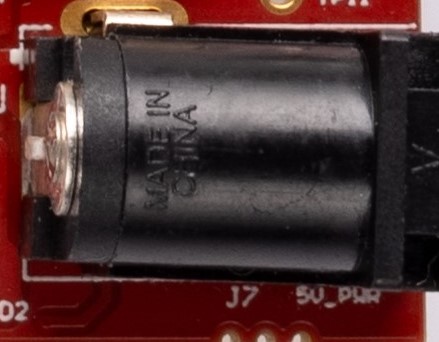SWRU620 April 2024
2.3 DC Jack
Higher current support: When using the EVM with the external power adapter, the 5V supply is provided by the external power adapter. For most of the use cases, this external power supply option is not used, as power is derived from the USB interface.

Note: After the 5V power supply is provided to the EVM, TI
recommends pressing the NRST switch one time to verify a reliable boot-up
state.
Note: All digital IO pins of the device (except NRESET) are not
fail safe; hence, care needs to be taken that the pins are not driven externally
without the VIO supply being present to the device.